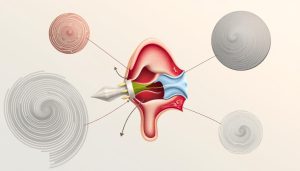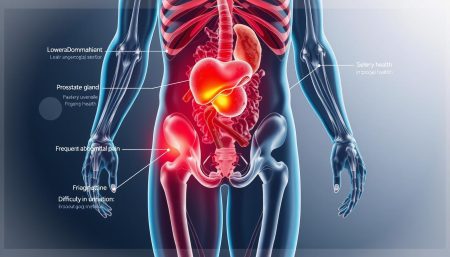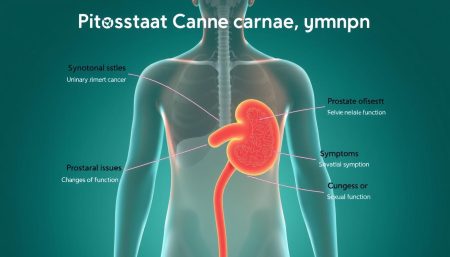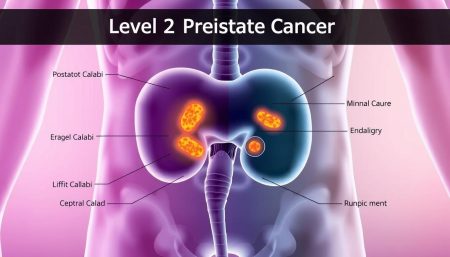As men get older, they often worry about their prostate health. Many ask if benign prostatic hyperplasia (BPH) can turn into prostate cancer. This question worries a lot of people who want to know about their prostate health.
BPH, or prostate enlargement, is a common issue for older men. It’s different from prostate cancer, even though they share some similarities. Knowing how BPH and cancer risk are connected is key for good prostate care and peace of mind.
In this article, we’ll look into the facts about BPH and its link to prostate cancer. We’ll check out the scientific evidence, talk about risk factors, and offer insights. This will help you make smart choices about your prostate health.
Understanding BPH and Its Relationship with Prostate Cancer
As men get older, prostate health becomes a big concern. Two main issues are benign prostatic hyperplasia (BPH) and prostate cancer. These two conditions affect the prostate gland but are different and have different effects on men’s health.
What is Benign Prostatic Hyperplasia (BPH)?
BPH is a non-cancerous growth of the prostate gland. It’s common in older men and can cause urinary problems. While BPH can make life uncomfortable, it doesn’t raise the risk of prostate cancer.
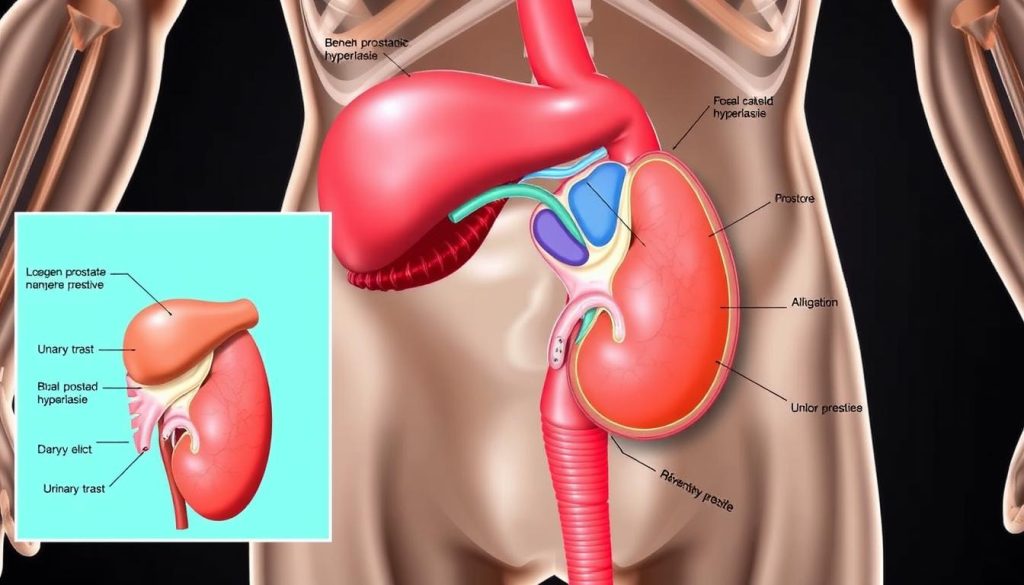
Key Differences Between BPH and Prostate Cancer
There are big differences between BPH and prostate cancer:
- BPH is not cancerous, but prostate cancer is
- BPH affects the inside of the prostate, while cancer starts on the outside
- BPH mainly causes urinary issues, but cancer can spread to other parts of the body
Common Risk Factors and Demographics
Some risk factors are the same for BPH and prostate cancer:
- Age: Both conditions get more common with age
- Family history: Genetics play a role in both BPH and prostate cancer risk
- Hormonal changes: Testosterone levels can affect prostate growth and cancer risk
Knowing the differences helps men understand prostate health issues. Regular check-ups are key for early detection and management of BPH and prostate cancer.
Does BPH Turn Into Prostate Cancer? The Scientific Evidence
Studies on BPH and prostate cancer have given mixed results. Some say there’s a link, while others don’t see a direct connection. Let’s dive into what science currently knows about this complex topic.
A big study in the Journal of Urology looked at over 3 million men with BPH. It found men with BPH had a slightly higher chance of getting prostate cancer. This made people worry about BPH turning into cancer.
But, a meta-analysis of many studies said BPH itself doesn’t raise cancer risk. It’s thought that shared risk factors like age, genetics, and hormonal changes might explain the link. These factors are common to both conditions.
While BPH and prostate cancer can coexist, they are distinct conditions with different cellular origins and growth patterns.
Researchers are now looking into molecular markers. These markers could help spot men with BPH at higher cancer risk. This could lead to better screening and managing prostate health risks.
| Aspect | BPH | Prostate Cancer |
|---|---|---|
| Cell Growth | Benign enlargement | Malignant proliferation |
| Location | Transition zone | Peripheral zone |
| Progression | Slow, non-life-threatening | Can be aggressive, potentially fatal |
Even though there’s no clear link from BPH to cancer, research is still ongoing. Regular health checks and talking to your doctor are key to keeping your prostate healthy.
Recognizing Symptoms: BPH vs. Prostate Cancer
It’s important to know the signs of prostate conditions early. This helps in getting the right treatment. We’ll look at the symptoms of benign prostatic hyperplasia (BPH) and prostate cancer. These are two common issues that affect men’s health.
Common BPH Symptoms
BPH, or prostate enlargement, often shows up with urinary problems. Men with BPH might notice:
- Frequent urination, especially at night
- Weak urine stream or trouble starting to urinate
- Urgency to urinate
- Feeling like the bladder isn’t empty
Warning Signs of Prostate Cancer
Prostate cancer symptoms can be hard to spot and might seem like BPH. Some signs include:
- Blood in urine or semen
- Erectile dysfunction
- Pain or discomfort in the pelvic area
- Unexplained weight loss
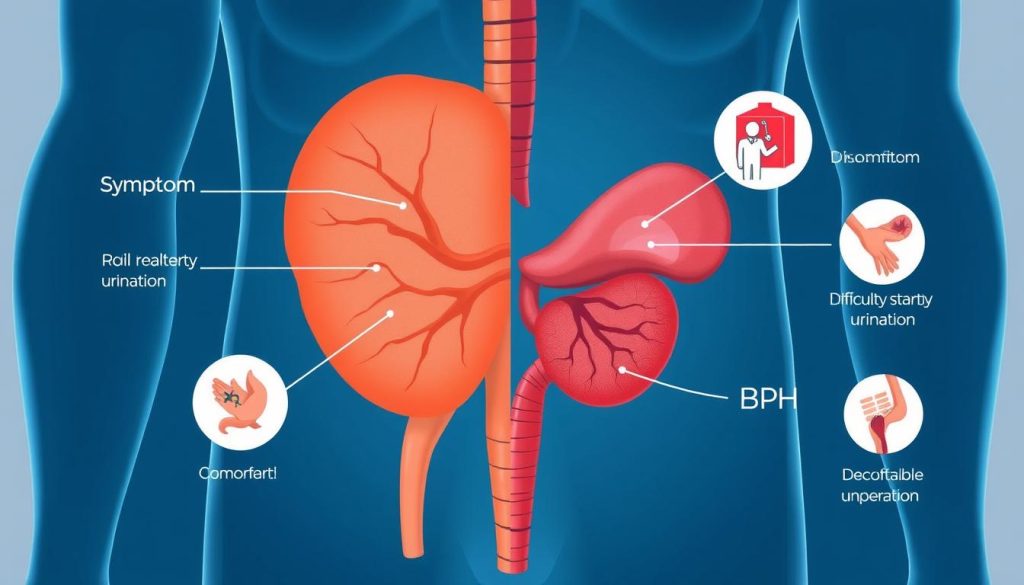
When to Seek Medical Attention
If you notice any of these symptoms, see a doctor right away. Early detection is crucial for managing prostate issues. Regular check-ups are key, especially for men over 50 or those with a family history of prostate problems.
“Understanding your body and recognizing changes is the first step in prostate health. Don’t ignore the signs – your prostate health matters.”
While these symptoms can be scary, they don’t always mean cancer. Many men with BPH live healthy lives with proper management. But, getting medical help quickly is important for a proper diagnosis and treatment.
| Symptom | BPH | Prostate Cancer |
|---|---|---|
| Frequent urination | Common | Can occur |
| Weak urine stream | Common | Can occur |
| Blood in urine | Rare | More common |
| Pelvic pain | Uncommon | Can occur |
| Weight loss | Not typical | May occur in advanced stages |
Risk Assessment and Prevention Strategies for Prostate Health
It’s important for men of all ages to know about prostate health risks. As we get older, the risk of conditions like benign prostatic hyperplasia (BPH) goes up. Understanding what affects BPH can help us prevent it.
Age is a big factor in prostate health. Men over 50 are more likely to face BPH issues. If your dad or brother had prostate problems, you might be at higher risk too.
What you do every day affects your prostate health. Eating well, with lots of fruits, veggies, and whole grains, can help. Also, exercising, especially to strengthen the pelvic floor, can manage symptoms and slow BPH.
“Prevention is better than cure. Taking care of your prostate health today can save you from potential complications tomorrow.”
Here are some simple steps to keep your prostate healthy:
- Limit alcohol and caffeine intake
- Quit smoking
- Maintain a healthy weight
- Stay hydrated
- Practice stress-reduction techniques
Seeing your doctor regularly is key. Catching prostate health issues early can lead to better management and outcomes. Don’t ignore changes in your urinary habits or delay seeing a doctor.
| Risk Factor | Impact on Prostate Health | Prevention Strategy |
|---|---|---|
| Age | Increased risk of BPH and prostate cancer | Regular screenings after age 50 |
| Family History | Higher likelihood of prostate issues | Genetic counseling and early screenings |
| Diet | Poor diet may increase inflammation | Consume plant-based foods and limit red meat |
| Physical Activity | Inactivity may worsen symptoms | Engage in regular exercise, especially pelvic floor workouts |
Diagnostic Methods for BPH and Prostate Cancer
Getting a correct diagnosis is key when facing prostate conditions like benign prostatic hyperplasia and prostate cancer. Doctors use different methods to spot and tell apart these issues.
Physical Examinations
A digital rectal exam (DRE) is usually the first step. It lets doctors check the prostate’s size, shape, and feel. It might not be the most comfortable, but it’s quick and crucial for checking prostate health.
Blood Tests and PSA Levels
Blood tests are important for prostate cancer screening. The prostate-specific antigen (PSA) test checks PSA levels in the blood. High levels might mean BPH or cancer, but other things can also affect the results. Always talk to a doctor about your PSA test results.
Imaging and Biopsy Procedures
If tests show concerns, doctors might suggest imaging like ultrasounds or MRIs. These give clear pictures of the prostate, helping spot any odd areas. Sometimes, a biopsy is needed. This involves taking small tissue samples for a closer look, helping confirm or rule out prostate cancer.
FAQ
Q: Can BPH turn into prostate cancer?
A: No, BPH (Benign Prostatic Hyperplasia) does not turn into prostate cancer. BPH is a non-cancerous growth of the prostate. Prostate cancer is the abnormal growth of malignant cells. Having BPH doesn’t mean you can’t get prostate cancer. It’s possible to have both conditions at the same time.
Q: Does having BPH increase my risk of prostate cancer?
A: There’s no clear link between BPH and prostate cancer. Some studies suggest a weak connection. This might be because of shared risk factors like age and hormonal changes. Regular check-ups with your doctor are important to watch your prostate health.
Q: What are the main differences between BPH and prostate cancer symptoms?
A: BPH and prostate cancer share some symptoms, but there are big differences. BPH causes frequent urination, a weak urine stream, and trouble starting to urinate. Prostate cancer might not show symptoms early on. But, advanced cancer can cause blood in urine or semen, erectile dysfunction, and bone pain. If you have any concerning symptoms, see a doctor to find out what’s causing them.
Q: How is BPH diagnosed and monitored?
A: Doctors use several methods to diagnose BPH, including:
• Digital rectal exam (DRE)
• Prostate-specific antigen (PSA) blood test
• Urinary flow tests
• Ultrasound imaging
• Sometimes, a prostate biopsy
Regular checks might include PSA tests and symptom assessments. Your doctor will decide the best plan for you.
Q: Are there any lifestyle changes that can help manage BPH or reduce prostate cancer risk?
A: Yes, making healthy lifestyle choices can help with BPH and might lower prostate cancer risk. Eat a diet full of fruits, vegetables, and whole grains. Exercise, manage stress, limit alcohol and caffeine, quit smoking, and keep a healthy weight. These changes are good, but don’t forget to follow your doctor’s advice and treatment.
Q: When should I seek medical attention for prostate-related concerns?
A: See a doctor if you have trouble urinating or a weak urine stream. Also, if you urinate often, especially at night, or if you see blood in your urine or semen. Pain in your lower back, hips, or upper thighs is another reason to seek help. Men over 50 (or 45 if at higher risk) should talk to their doctor about prostate cancer screening. Early detection and treatment are key for both BPH and prostate cancer.











